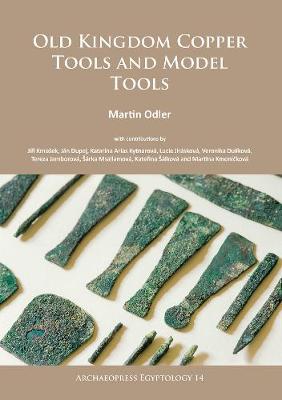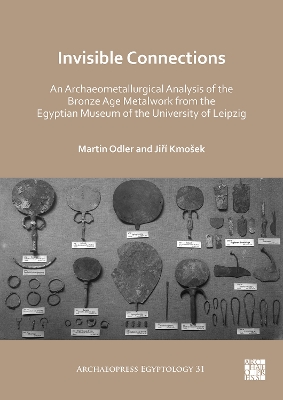Archaeopress Egyptology
2 total works
The Old Kingdom of Egypt (Dynasties 4–6, c. 2600–2180 BC) is famous as a period of the builders of the largest Egyptian pyramids. It is generally accepted that the evidence on the use of copper alloy tools from this era is meagre. Martin Odler gathers the textual, iconographic and palaeographic evidence and examines Old Kingdom artefacts in order to revise this view on the use of copper alloy tools and model tools. Furthermore, he provides updated definitions of tool classes and tool kits, together with the context of their use. Besides rare specimens of full-size tools, the largest corpora of the material have been preserved in the form of model tools in the burial equipment of the Old Kingdom elite and were most probably symbols of their power to commission and fund craftwork. Moreover, the size and elaboration of the model tools were probably connected to the social status of the buried persons. The long-standing division in the Egyptological literature between full-size tools and model tools is questioned. The ancient sources also enable to show that the preservation of material culture from the Old Kingdom was largely dependent on a conscious selection made within the past culture, with completely different settlement and funerary contexts and a conspicuous absence of weapons. The volume is completed by co-authored case studies on archaeometallurgy of selected Old Kingdom artefacts in the collection of the Egyptian Museum of Leipzig University, on morphometry of Old Kingdom adze blades and on the finds of stone and ceramic vessels associated with the findings of so-called Old Kingdom model tools.
The Egyptian Museum of the University of Leipzig has the largest university collection of ancient Egyptian artefacts in Germany. It includes important objects from the excavations of the most prolific excavator among the museum’s curators, Georg Steindorff, at the sites of Abusir, Aniba, and Giza, complemented by objects from Abydos, Thebes, and Kerma. The catalogue represents the results of an interdisciplinary project by Egyptologist and archaeologist Martin Odler, archaeometalurgist Jiří Kmošek and other participating researchers. A selection of 86 artefacts was analysed using a range of archaeometallurgical methods (X-ray fluorescence; metallography; neutron activation analysis; lead isotope analysis), providing a diachronic sample of Bronze Age Egyptian copper alloy metalwork from Dynasty 1 to Dynasty 19.
Besides currently popular focus on the ore provenance, the selection of the applied methods aimed also at the description of practical physical properties of the objects. The question of differences between full-size functional artefacts and models is addressed, as is the problem of 'imports' and their ethnic interpretation. The analyses brought many unexpected results to light, the most surprising being a bowl (ÄMUL 2162) made of arsenical copper high in nickel, which has parallels in Chalcolithic and Early Bronze Age Anatolia, and was featured in an article in the Journal of Archaeological Science in 2018. The corpus presented here involves the largest analysed metalwork assemblage from the Nubian C-Group and the Egyptian New Kingdom, and it addresses the issue of the use of local Nubian ore sources versus the sources of copper from Cyprus and elsewhere.
Besides currently popular focus on the ore provenance, the selection of the applied methods aimed also at the description of practical physical properties of the objects. The question of differences between full-size functional artefacts and models is addressed, as is the problem of 'imports' and their ethnic interpretation. The analyses brought many unexpected results to light, the most surprising being a bowl (ÄMUL 2162) made of arsenical copper high in nickel, which has parallels in Chalcolithic and Early Bronze Age Anatolia, and was featured in an article in the Journal of Archaeological Science in 2018. The corpus presented here involves the largest analysed metalwork assemblage from the Nubian C-Group and the Egyptian New Kingdom, and it addresses the issue of the use of local Nubian ore sources versus the sources of copper from Cyprus and elsewhere.

